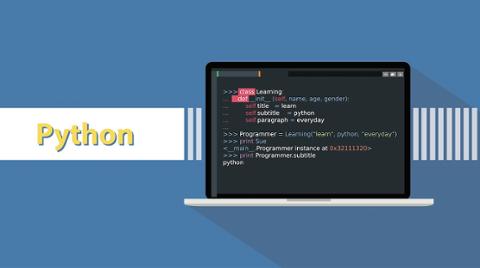In a twist that should surprise exactly nobody, the TIOBE Index (which provides a monthly update of the world’s most popular programming languages) named Python its top programming language of 2020.
Why isn’t this surprising? While Python has long dominated as a “generalist” programming language, it’s made substantial inroads into specialty segments such as data science and artificial intelligence (A.I.). In other words, not only is it big… but it still has significant room to grow, by all indications (and not just TIOBE; RedMonk and other programming-language rankings consistently feature it near the top).
“Python is popping up everywhere,” is how TIOBE put it in a statement accompanying the latest rankings. “The main reasons for this massive adoption are the ease of learning the language and its high productivity. These two qualities are key in a world that is craving for more developers in all kinds of fields. Python already tested the second position some months ago and it will for sure swap places with Java permanently soon.”
Right now, C stands at the top of the TIOBE Index, followed by Java and Python, with C++ and C# rounding out the top five. To create its monthly rankings, TIOBE utilizes data from a variety of aggregators and search engines, including Google, Wikipedia, YouTube, and Amazon. For a language to rank, it must be Turing complete, have its own Wikipedia entry, and earn more than 5,000 hits for +”<language> programming” on Google. Yes, critics have argued for years that this methodology is more a measure of languages’ “buzz” than their actual usage, and that’s a fair criticism—however, TIOBE also gives some good insight into which languages are potentially on the rise.
New to Python? If you’re interested in any kind of software development, it’s obviously worth learning. Or as Artur Yolchan, Senior Software Engineer and owner of the website Coding Skills, recently told Dice: “Python will probably be the most favorite programming language for developers in 2021.”
Python beginners should head over to Python.org, which offers a handy beginner’s guide. Microsoft also has a video series, “Python for Beginners,” with dozens of lessons (most under five minutes in length; none longer than 13 minutes). That’s in addition to a variety of Python tutorials and books (some of which will cost a monthly fee) that will teach you the nuances of the language (and don’t forget your IDEs).
Once you’ve mastered the basics, you can master the extensions and frameworks that make programming in Python that much easier. Whatever the nature of your programming journey, keep Python in mind going forward—because it’s clear that the language is not only here to stay, but likely to become even more ubiquitous in 2021 and beyond.



